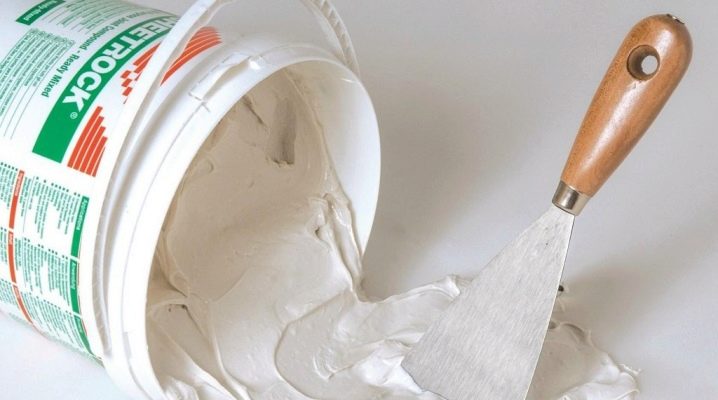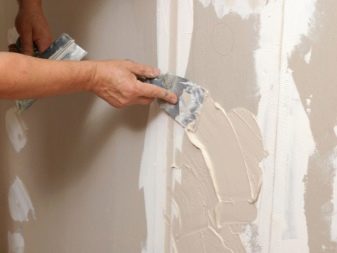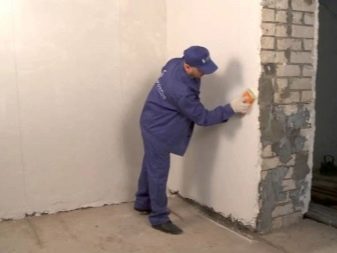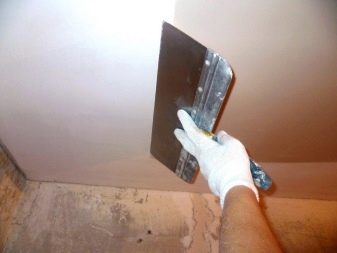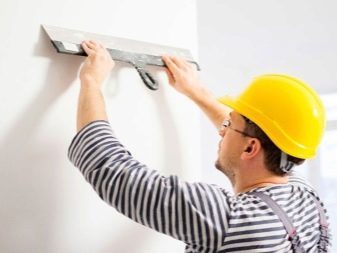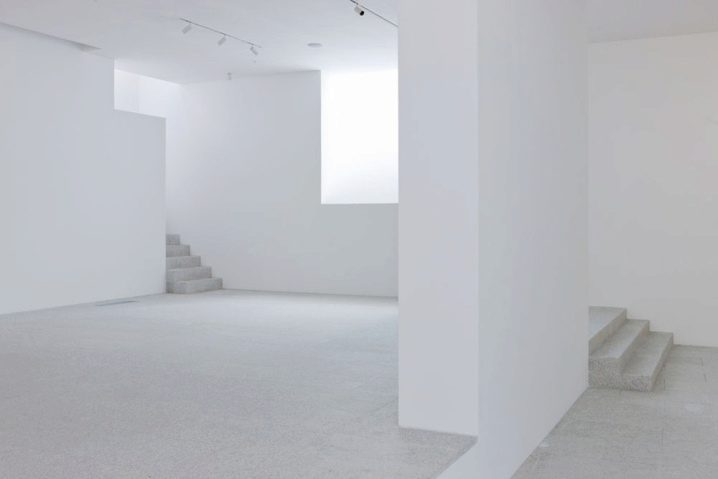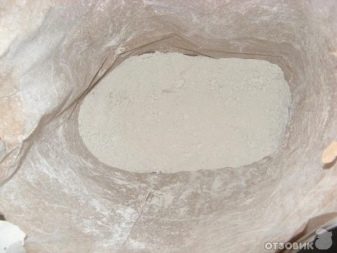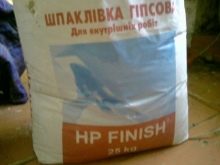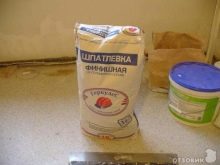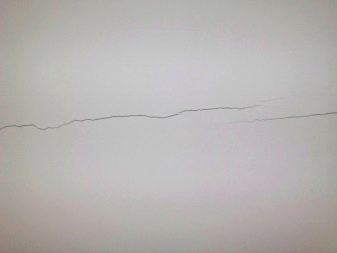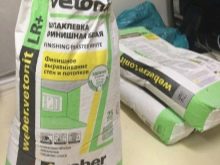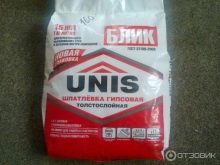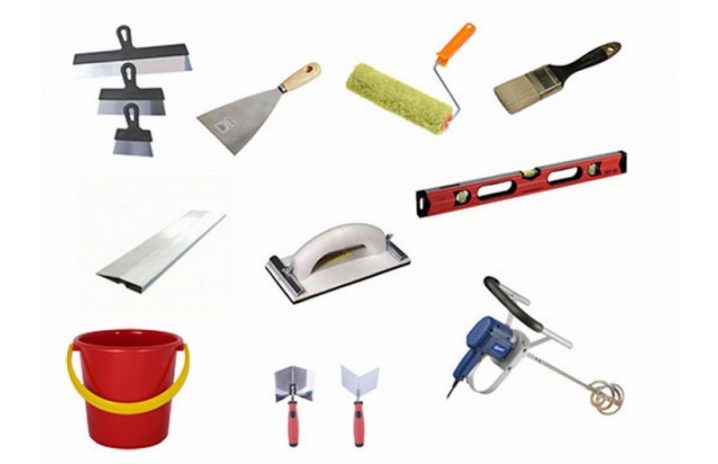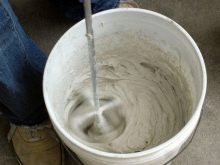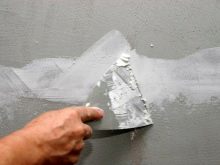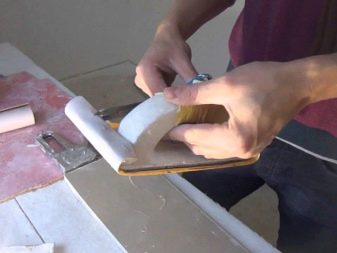How to choose a finishing putty for painting?
In the process of preparing for repair, many questions may arise, especially if the work is carried out independently. One of them is the question of choosing a quality finishing putty for painting.
Paint - a popular finishing material. It has many advantages over other types of wall decoration, so it is often chosen as a decor. The paint is used in the repair of offices, warehouses and apartments. This type of finish is durable, not afraid of moisture. The low price also makes painting very attractive.
Before applying the paint on the walls, they must be leveled and puttied.
Therefore, finishing putty plays an important role in the course of repair. If the walls are defective, a good putty will help to hide them, and vice versa, low-quality mixture will only exacerbate irregularities. Therefore, for repairs it is important to choose a good material.
What is superfinishing putty for?
Finishing putty - an indispensable thing to repair. It is the final touch in the alignment of the walls. The material is able to eliminate minor flaws. Under the layer of putty easily bumps and roughness. The paint also falls on the walls with a putty much smoother than on the surface without it.
But do not hope that with the help of putty you will be able to hide gross errors. The mortar is applied in a thin layer, and she can only correct small defects.
Putty usually has a smooth and uniform structure. Thanks to this composition is convenient to use. The white color of the mixture due to the fact that the shade of paint can be any (even light). In this case, the putty should not give the paint any extraneous tone.
Here are some requirements for putty, which are worth paying attention to:
- The homogeneity of the structure, the absence of lumps and large particles.
- Plasticity, ease of application on the wall.
- The material should not crack and crack after drying.
- Hue should remain white.
Types of spackling materials
There are two main types of finishing putty.The mixture can be sold dry or already diluted. If we talk about dry mixes, they are much cheaper. They also have a long shelf life.
The finished building mixture is suitable for those who have little experience in building and carry out repairs on their own. The cost of such material is higher.
What is included in the putty
Before buying it is important to carefully examine the composition of the material, because it depends on the quality of work and its result.
The composition of the putty may include the following components:
- Cement. If the material contains cement, it can be used to finish wet rooms and walls of building facades. Cement - moisture resistant and durable component. However, he has some drawbacks. One of them is the cracking of the composition after drying.
- Gypsum. Gypsum-based putty is often used for interior decoration. However, this mixture has some peculiarities. The composition dries very quickly. If the mixture is dried, then use it is no longer possible.
- Polymers. Putty with polymers is great for finishing walls before painting. The material does not crack.Special chemicals in the composition of such putty greatly accelerate and facilitate the process of its application to the walls.
Surfaces after finishing with a mixture of this type are perfectly smooth. Also, this putty perfectly masks minor flaws. The disadvantages can be attributed only to the high cost of this material, although its price is quite justified by the quality.
Where it is better to apply the finishing putty
If you decide to paint the walls and apply a putty before that, It is worth considering how this room will be operated:
- It is better to finish the walls in the bathroom with putty, which contains cement. This material is not afraid of moisture. So, after drying, the paint will not crumble.
- The walls in the living room or other room is better to finish with plaster or polymer mixture. These options are the safest for people.
- If you need to create wall decor with putty, you should pay attention to decorative diluted putty, which includes polymers.
- If the facade is finished, then you should use heat insulating putty. This mixture retains heat inside the building, preventing cracks and chips from appearing on the surface.
- Also with the help of finishing putty you can arrange the ceiling.
What brand of finishing putty to purchase
Today the range of stores is very wide. Many are faced with the question of which firm’s products are preferred. Professionals with builders with many years of experience can help to understand this. Here are the recommended and most popular firms on the domestic market:
- “Vetonit Lr +”. Puttying this brand has proven itself. It contains polymers and may be the best solution for wall decoration in a room with low humidity.
- Knauf NR Finish. This brand is known to many Russians. It has an affordable price and high quality. This putty is composed of gypsum, perfectly hides joints and transitions, suitable for decoration of living rooms and hallways. Although it is not recommended to use it in the kitchen or in the bathroom. Material is usually sold as a dry mix. It dries within 24 hours.
- "Eunice Premium" It has established itself as a universal mixture, which has in its composition polymer particles. This material should be used indoors. It perfectly aligns the walls. At the same time, the color remains white, and cracks and scratches do not appear on the surface.This mixture is similar to Sheetrock.
However, it is worth remembering that the popular name of the company and the high cost are not indicators of the quality of the material.
When choosing a finishing putty, close attention should be paid to the composition. Also one of the determining factors when choosing a material should be the type of room for which the mixture will be used.
And now we recommend to watch a video about where two builders compare five types of finishing putty for painting.
How to properly putty
Before applying any type of finishing putty, the surface should be carefully prepared. Before applying the mortar must be primed. This will eliminate the presence of moisture in the base layer. If you skip this stage, the probability of mold formation will increase several times. Apply acrylic primer with a roller.
To do the work you will need the following tools:
- Putty knife. It is better to use spatulas of different widths.
- Level.
- Plumb.
- Tools for making the mixture. The ideal option would be a mixer or a drill with a nozzle.
- Sandpaper for sanding walls.
- Capacity for breeding mixture
- Separate tray.
Before you prepare the solution, carefully read the instructions. Add the required amount of water. Next, you should mix the mixture well until a homogeneous mass. A small amount of the mixture is stored in a separate tray. The rest should be covered to avoid drying.
Stir the solution frequently and thoroughly. When the mixture is ready, you can start finishing. For application to the wall is better to use a narrow spatula. A wide spatula can evenly distribute the material around the perimeter of the surface. There may be several layers. The process is laborious and laborious, but the paint only fits well on perfectly aligned walls.
After the finish putty dries, you can safely proceed to grinding. Usually the walls are sanded with sandpaper. This should be done manually. The grit of sandpaper should be P220-P280. High-grain paper should not be used.
It is better to grind walls with circular movements to achieve perfect smoothness.
For clarity, you can explore the video available on the Internet.This will help to understand the technology of applying the material and fineness of grinding.
Professional finishers most often work with a finishing putty. They know all the details of the choice and use of the material.
Here are some professional tips:
- The thickness of the finishing putty should be no more than 2 mm (maximum - 3 mm).
- Each new layer of putty should dry out completely.
- If a light-colored paint is chosen for decoration, the thickness of the finishing layer should be greater.
- It is possible to process a surface using sandpaper only after it dries (no earlier than in two hours). Duration of waiting depends on the composition and recommendations of the manufacturer.
- After the walls are perfectly smooth, they must be treated with a primer.
- Before painting, dried and ground walls should be considered in daylight. You can also use any lighting device. It is important to make sure that everything is done flawlessly. Small cracks, bumps and scratches can be visible through the paint, which can spoil the appearance of the surface.
- Only after all the layers dry out, you can proceed to the final stage - painting the walls.
On how to properly grind the walls for painting after puttying, see the following video.
